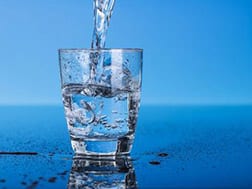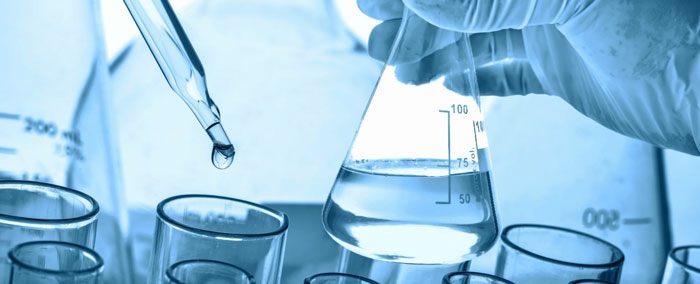Specialist Well Water Testing Services: Obtain Accurate Outcomes Rapid
Specialist Well Water Testing Services: Obtain Accurate Outcomes Rapid
Blog Article
Discover What Is Consisted Of in Water Testing and How It Guarantees Safe Drinking Water
Recognizing the details of water screening is critical in making certain the high quality and safety of our alcohol consumption water. With a meticulous assessment of physical, chemical, and microbiological aspects, water screening determines possible pollutants that can present health threats.
Trick Parts of Water Screening
Water testing is an important procedure that involves several crucial parts to guarantee the safety and security and quality of drinking water. Furthermore, making certain the pH balance of water is important, as it impacts the water's corrosiveness and the efficiency of sanitation processes.
One more considerable part entails microbiological analysis, where water samples are analyzed for the existence of bacteria such as microorganisms, infections, and protozoa. If taken in, this analysis is essential to identify biological risks that could pose health risks. Chemical analyses are performed to identify organic and not natural compounds, such as heavy steels, nitrates, and chemicals, that may be present in the water supply.

Finding Dangerous Pollutants
Finding harmful pollutants in drinking water is a basic facet of safeguarding public health. Each type of pollutant presents distinctive wellness risks, making their detection essential to make sure the water taken in by the public is secure.
Water screening for impurities is typically conducted by regulatory agencies and water utilities, employing a combination of field sampling and laboratory analysis. These evaluations are designed to discover both normally occurring compounds and anthropogenic contaminants that might have gone into the water system with agricultural overflow, industrial discharge, or aging framework. Normal tracking is necessary, as contamination degrees can change because of environmental changes, seasonal variants, or human tasks.
The identification of hazardous contaminants informs essential activities, such as water treatment interventions or public advisories, to mitigate threats. Early discovery is important to stop adverse wellness impacts, ranging from gastrointestinal illnesses to lasting problems like cancer, thereby making certain the continued safety of drinking water.

Chemical Evaluation Methods
In the realm of making certain risk-free alcohol consumption water, chemical analysis strategies play a critical duty in determining and quantifying pollutants. These methods are necessary for discovering a vast range of chemical materials, including hefty metals, chemicals, and commercial pollutants, which can present significant health and wellness threats. Techniques such as atomic absorption spectroscopy (AAS) and inductively combined plasma mass spectrometry (ICP-MS) are commonly utilized to gauge trace degrees of metals like lead, mercury, and arsenic. These tools give accurate metrology, facilitating compliance with regulative criteria.
Gas chromatography-mass spectrometry (GC-MS) is another important method, specifically for natural substances. It divides intricate blends and recognizes unstable and semi-volatile organic compounds, guaranteeing that contaminants like benzene and toluene are within secure limitations. High-performance fluid chromatography (HPLC) is likewise used for non-volatile compounds, including certain chemicals and drugs.
Ion chromatography is utilized to figure out concentrations of anions and cations, such as nitrates and sulfates, which are critical in assessing water quality. These chemical evaluation methods collectively ensure that alcohol consumption water continues to be risk-free by discovering discrepancies from established pureness standards, look at these guys thus safeguarding public wellness. Making sure precision and accuracy in these examinations is critical to maintaining the honesty of water security assessments.
Microbiological Examining Techniques
Accurate microbiological screening is vital for securing public wellness by making sure that drinking water is devoid of damaging pathogens. This procedure involves finding and specifying microbes such as germs, infections, and protozoa that may contaminate water materials. Common microorganisms consist of Escherichia coli, Giardia, and Cryptosporidium, each positioning substantial health and wellness threats.
Several approaches are employed in microbiological screening to recognize these risks. The membrane layer filtration strategy is frequently utilized, entailing water going through a filter that catches microorganisms, which are then cultured to identify their visibility and concentration. The multiple-tube fermentation approach enables the quantification of coliform germs making use of a series of dilution and incubation steps.
Improvements in modern technology have introduced molecular methods such as polymerase chain response (PCR), which allows for the very specific and rapid detection of microorganisms by magnifying their hereditary material. Enzyme-linked immunosorbent assays (ELISA) also provide a technique to identify pathogens by identifying particular healthy proteins or antigens.
These differed approaches are vital for thorough water top quality assessment, making sure that water treatment procedures work which circulation systems maintain security. By employing these microbiological testing approaches, potential wellness threats can be recognized and mitigated immediately.

Importance for Public Health
Ensuring the microbiological safety and security of alcohol consumption water directly impacts public wellness by stopping the spread of waterborne illness. Pathogens such as bacteria, infections, and protozoa can result in illnesses like cholera, dysentery, and stomach infections (Water Tesing Services Orlando). The application of comprehensive water screening procedures is paramount in recognizing and reducing these threats, hence protecting communities my site from possible outbreaks
Normal water screening not only identifies microbial contaminants yet also analyzes chemical and physical parameters that can affect wellness. For instance, too much levels of nitrates or heavy steels such as lead can position significant health threats, particularly to at see this page risk populations like infants and expectant women. By recognizing these risks early, water screening enables timely treatments, making certain the supply of water remains within risk-free intake standards.
Additionally, water testing plays a crucial function in keeping public self-confidence in community water systems. For policy makers and wellness officials, the data acquired from water screening notifies choices on framework investments and public health strategies, ensuring sources are routed where they are most needed.
Conclusion
Water testing works as a crucial device for making sure the security and quality of alcohol consumption water with extensive evaluation of its physical, chemical, and microbiological residential properties. By finding damaging contaminants, such as hefty metals and pesticides, and making use of sophisticated techniques like chromatography and spectrometry, water screening helps with the recognition of prospective health threats. The implementation of strenuous testing protocols is crucial for keeping compliance with safety and security requirements, inevitably securing public health and strengthening confidence in local water systems.

By recognizing these hazards early, water testing allows prompt treatments, ensuring the water supply remains within risk-free usage criteria.
Water testing serves as a vital system for making certain the safety and high quality of drinking water with detailed analysis of its physical, chemical, and microbiological properties.
Report this page